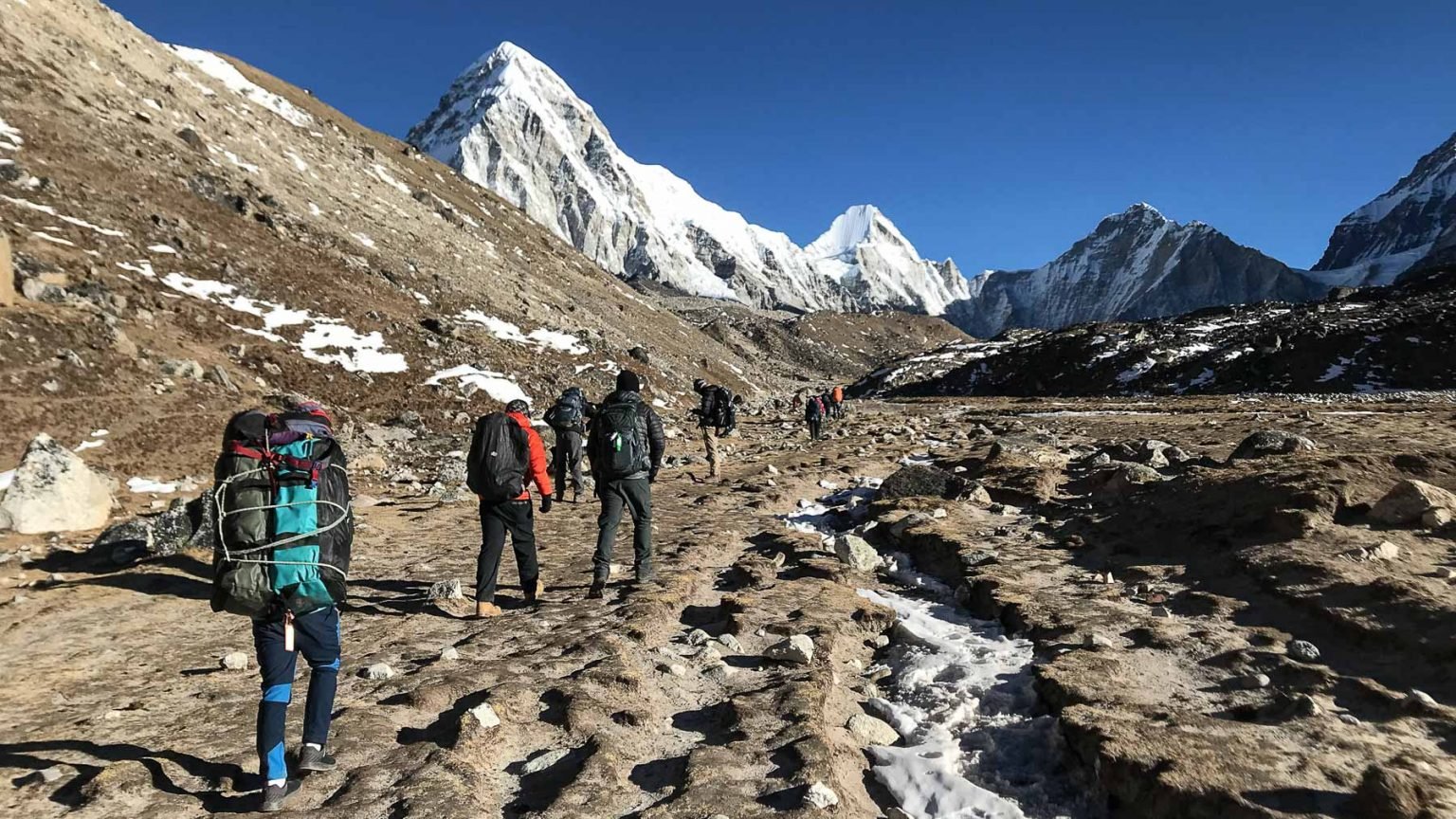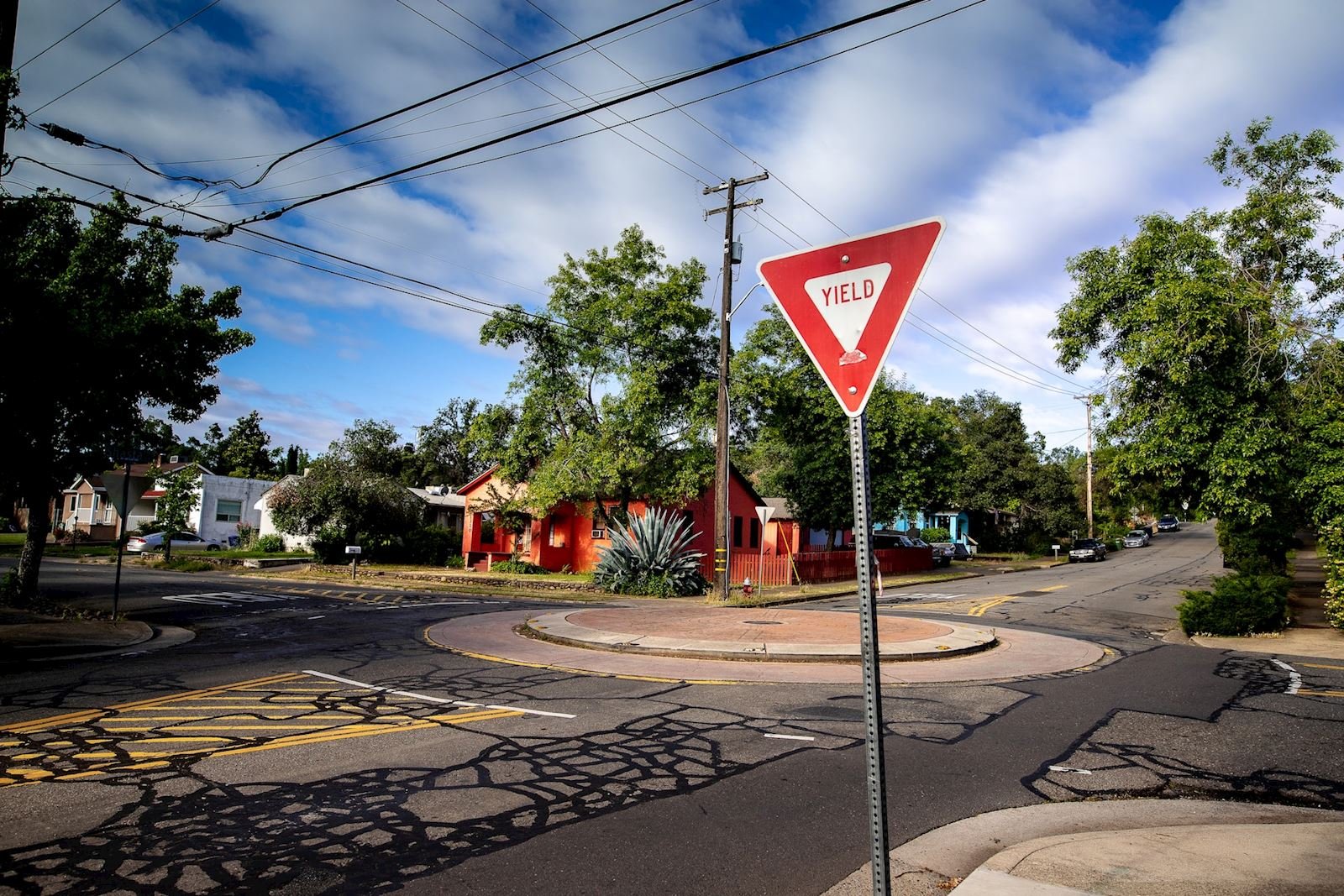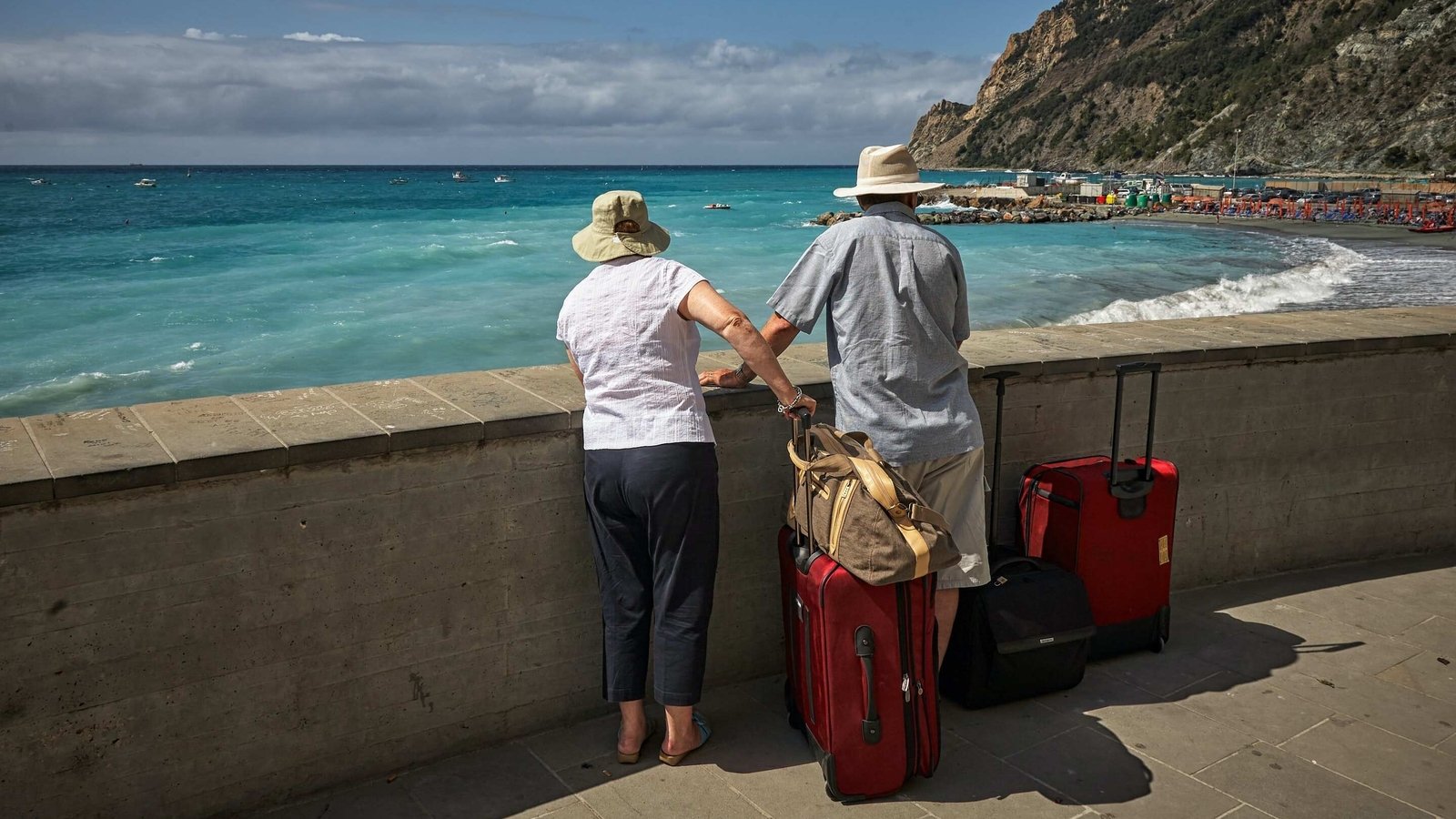The Everest Three High Pass Trek stands as one of the most exhilarating and rewarding adventures in the Himalayas, offering a transformative journey through some of the world’s most dramatic and awe-inspiring landscapes. This trek is a grand exploration of the Everest region, where trekkers traverse three high-altitude passes—Renjo La, Cho La, and Kongma La—each providing unique vistas and challenges. As you ascend through these passes, the trek takes you beyond the clouds, offering panoramic views of towering peaks and serene valleys.
Beginning in the bustling town of Lukla, the trek introduces you to the stunning landscapes of the Everest region. From Lukla, the trail winds through verdant forests and terraced fields, gradually ascending to the iconic Namche Bazaar, a vibrant Sherpa town that serves as a crucial acclimatization stop. Here, trekkers acclimate to the altitude while enjoying local culture and spectacular views of the surrounding peaks.
The trek’s highlight comes with the ascent to the three high passes. Renjo La, standing at 5,388 meters (17,677 feet), is renowned for its breathtaking views of the Everest massif and the turquoise Gokyo Lakes below. The pass provides a sense of tranquility and accomplishment as you gaze out over the Himalayan panorama. Cho La, at 5,420 meters (17,783 feet), presents a more demanding climb through rugged and icy terrain. Despite the physical challenge, the views of the Khumbu Glacier and surrounding peaks are immensely rewarding. The highest of the three passes, Kongma La, at 5,535 meters (18,159 feet), offers an expansive view of snow-capped giants and rugged ridges that stretch across the horizon.
Beyond the passes, the trek continues through the enchanting Gokyo Valley, known for its serene glacial lakes and stunning mountain vistas. The ascent to Gokyo Ri, a peak that offers panoramic views at 5,357 meters (17,575 feet), provides a tranquil moment of reflection amidst the demanding trek. The valley’s pristine beauty and the shimmering lakes offer a stark contrast to the rugged terrain of the high passes.
The Everest Three High Pass Trek is not just a physical challenge but also a cultural journey. Along the route, trekkers encounter traditional Sherpa villages, where the warm hospitality and rich cultural heritage add depth to the experience. Interactions with the Sherpa people, visits to monasteries, and participation in local festivals provide insight into their unique way of life.
In summary, the Everest Three High Pass Trek is a journey of breathtaking landscapes, significant physical challenge, and cultural immersion. It takes trekkers beyond the clouds into the heart of the Himalayas, offering an adventure that is as profound as it is exhilarating. With each high pass crossed and each summit reached, the trek provides a deep sense of accomplishment and a lasting appreciation for the natural and cultural wonders of the Everest region.
Introduction to the Everest Three High Pass Trek
The Everest Three High Pass Trek is a premier adventure that promises an extraordinary journey through the rugged and spectacular terrain of the Himalayas. Spanning approximately 15 to 20 days, this trek takes adventurers through some of the highest and most challenging passes in the Everest region: Renjo La, Cho La, and Kongma La. Each of these passes, standing above 5,300 meters, offers breathtaking views of towering peaks, glacial lakes, and expansive mountain vistas. The trek begins with a flight from Kathmandu to Lukla, followed by a series of scenic hikes through traditional Sherpa villages, lush forests, and alpine meadows. As trekkers ascend, they experience the dramatic changes in landscape and climate, culminating in the high-altitude challenges of the passes. The journey also includes acclimatization days to ensure a safe ascent, providing trekkers with ample time to adjust to the thinning air and harsh conditions. Throughout the trek, adventurers are immersed in the rich cultural tapestry of the Everest region, interacting with local communities and gaining insight into their unique way of life. The Everest Three High Pass Trek is renowned for its combination of challenging terrain, stunning natural beauty, and cultural experiences, making it a quintessential adventure for avid trekkers.
What Makes the Trek Unique?
The 15 Day Trek to Everest base camp stands out due to its combination of extreme altitude, diverse landscapes, and the crossing of three significant high passes, each offering distinct and breathtaking views. Unlike other trekking routes in the Everest region, this trek encompasses the challenge of navigating through Renjo La, Cho La, and Kongma La, each providing a unique perspective of the Himalayan panorama. Renjo La offers serene views of the Everest massif and the tranquil Gokyo Lakes, creating a peaceful yet awe-inspiring experience. Cho La presents a more technical challenge with its icy and rocky terrain, rewarding trekkers with dramatic vistas of the Khumbu Glacier and surrounding peaks. Kongma La, the highest of the three, provides expansive views of snow-covered mountains and rugged ridges that stretch as far as the eye can see. The trek also includes a visit to the Gokyo Valley, known for its stunning glacial lakes and the ascent of Gokyo Ri for panoramic views. The combination of these high passes with the cultural richness of Sherpa villages and monasteries offers a trekking experience that is both physically demanding and culturally enriching. This unique blend of challenges and rewards makes the Everest Three High Pass Trek a standout adventure in the Himalayas.
Planning Your Trip: When to Go
Timing is crucial when planning the Everest Three High Pass Trek, as weather conditions can significantly impact the trekking experience. The most popular times to undertake this trek are during the pre-monsoon (spring) and post-monsoon (autumn) seasons. The pre-monsoon season, from late March to early May, is favored for its relatively stable weather, clear skies, and warmer temperatures. This period allows for optimal trekking conditions and stunning views of the Himalayas, with the added benefit of blooming rhododendrons in the lower elevations. The post-monsoon season, from late September to early November, is also a good time for trekking, offering clear weather and cooler temperatures. However, it is generally cooler than the spring season, with temperatures dropping significantly at higher altitudes. Trekking outside these windows, such as during the monsoon season (June to August), is generally not recommended due to heavy rainfall, which can lead to landslides, trail erosion, and poor visibility. Winter months (December to February) are also challenging due to extreme cold and snow conditions at high altitudes. Proper planning and choosing the right time to trek can enhance the overall experience and safety of the Everest Three High Pass Trek.
Physical Preparation and Training Tips
Physical preparation is essential for successfully completing the Everest Three High Pass Trek, given its demanding nature and high-altitude conditions. Building cardiovascular endurance is crucial, as the trek involves long days of hiking with significant elevation gains. Engaging in regular aerobic exercises such as running, cycling, or swimming will help improve stamina and overall fitness. Strength training, focusing on the legs, core, and upper body, is also important to handle the trek’s rugged terrain and to carry a heavy backpack comfortably. Incorporating long hikes or walks with a weighted pack into your training regimen will help simulate the conditions of the trek. It is also beneficial to train at higher altitudes if possible, as this can help acclimate your body to lower oxygen levels. Flexibility and balance exercises, such as yoga or stretching, can aid in preventing injuries and improving overall agility. Mental preparation is equally important, as the trek can be physically and mentally demanding. Developing a positive mindset and being prepared for the challenges of high-altitude trekking will contribute to a successful and enjoyable adventure. With dedicated training and preparation, trekkers can enhance their physical readiness and increase their chances of a successful and rewarding trek.
Required Permits and Documentation
Embarking on the Everest Three High Pass Trek requires obtaining several permits and documentation to ensure a smooth and legal journey. The primary permit needed is the TIMS (Trekkers’ Information Management System) card, which helps manage trekking activities and ensure safety in the region. This permit is obtained through a registered trekking agency in Nepal or the Nepal Tourism Board. In addition to TIMS, trekkers need to secure the Sagarmatha National Park entry permit, as the trek traverses this protected area. This permit is available at the Nepal Tourism Board offices in Kathmandu or Lukla, or through a trekking agency. For trekkers passing through areas with restricted access, such as the Upper Mustang or certain parts of the Solu-Khumbu region, additional permits may be required. It is also important to carry a valid passport and provide recent passport-sized photographs for permit applications. Ensuring that all necessary permits and documentation are in order before starting the trek is crucial for compliance with local regulations and for a hassle-free trekking experience. Properly managed paperwork contributes to the safety and smooth operation of the trek, allowing trekkers to focus on enjoying the adventure.
Essential Packing List for the Trek
Embarking on the Everest Three High Pass Trek demands careful packing to ensure safety, comfort, and preparedness for the varied conditions encountered along the route. Essential gear includes a sturdy and comfortable trekking backpack with sufficient capacity to carry your gear and supplies. A high-quality sleeping bag rated for temperatures as low as -20°C (-4°F) is necessary for the cold nights at high altitudes. Trekking boots with good ankle support and a reliable waterproof, windproof jacket are crucial for navigating the rugged terrain and changing weather conditions.
Clothing should be layered for versatility, including moisture-wicking base layers, insulating mid-layers like fleece or down jackets, and a waterproof outer shell. It’s important to bring several pairs of thermal socks and lightweight, quick-dry underwear. Other essentials include a wide-brimmed hat, gloves, and a scarf or buff for protection against the cold. Trekking poles provide stability and help manage steep ascents and descents.
For hydration, a durable water bottle or hydration system and a water purification method like tablets or a filter are vital. Personal items such as high-energy snacks, a headlamp with extra batteries, a multi-tool, and a basic first aid kit are necessary. Don’t forget sunscreen with high SPF, lip balm, and sunglasses with UV protection. Additionally, a camera with extra batteries and memory cards will help capture the stunning landscapes. Properly packing these items ensures that you are well-prepared for the challenges and rewards of the Everest Three High Pass Trek.
Daily Itinerary Overview
The Everest Base Camp Trek typically unfolds over 15 to 20 days, with an itinerary that balances trekking with necessary acclimatization. The trek begins with a flight from Kathmandu to Lukla, followed by a trek to Phakding, where the journey officially starts. The first few days are spent trekking to Namche Bazaar, the gateway to Everest, allowing for acclimatization. From Namche, the route heads towards Tengboche, known for its monastery and panoramic mountain views.
The itinerary then progresses to Dingboche, where additional acclimatization days are included. The trek through Dingboche leads to Lobuche, preparing for the high pass crossings. The first high pass, Kongma La, is tackled before reaching Gorak Shep, from where trekkers ascend to Everest Base Camp. Following this, the trek continues to cross Cho La and then Renjo La passes. The journey concludes with a descent through the Gokyo Valley and a return to Lukla. This itinerary allows for proper acclimatization and provides the flexibility to adjust based on weather conditions and individual fitness levels, ensuring a safe and enjoyable trek.
Key Attractions Along the Route
The Everest Three High Pass Trek is rich with attractions that highlight the diverse beauty and cultural significance of the Everest region. Key highlights include Namche Bazaar, a vibrant Sherpa town with markets, monasteries, and stunning mountain views. The Tengboche Monastery, one of the most famous monasteries in the region, offers panoramic vistas of Everest and other towering peaks.
The trek also takes you to the Gokyo Valley, renowned for its striking turquoise glacial lakes and the Gokyo Ri summit, which provides breathtaking panoramic views of the Everest massif and neighboring peaks. The crossing of each high pass—Kongma La, Cho La, and Renjo La—offers its own unique set of attractions, including dramatic views of snow-capped peaks, rugged landscapes, and the intricate patterns of the Khumbu Glacier. Each pass provides a different perspective of the Himalayas, contributing to the trek’s appeal.
Other notable attractions include the scenic alpine meadows, serene glacial moraines, and the traditional Sherpa villages along the route. These elements combine to create a trek that is both visually stunning and culturally enriching.
The Three High Passes Explained
The Everest Three High Passes Trek is defined by its challenging crossings of three high-altitude passes: Renjo La, Cho La, and Kongma La. Each pass presents a unique set of challenges and rewards. Renjo La, at 5,388 meters (17,677 feet), offers tranquil views of the Everest massif and the Gokyo Lakes, providing a serene and picturesque experience. The pass is known for its relatively easier ascent compared to the others, making it a significant yet manageable part of the trek.
Cho La, standing at 5,420 meters (17,783 feet), is the most technically demanding of the three. The pass involves navigating icy and rocky terrain, which requires careful footing and some scrambling. The reward for this challenging ascent is the dramatic vista of the Khumbu Glacier and the surrounding peaks.
Kongma La, the highest of the three at 5,535 meters (18,159 feet), offers expansive views of snow-covered ridges and towering peaks. The ascent is physically demanding and involves traversing a rugged and often snow-covered trail. The panoramic views from Kongma La are among the most breathtaking of the trek, providing a grand culmination to the high-pass crossings.
Navigating the Gokyo Lakes
The Gokyo Lakes, located in the Gokyo Valley, are one of the most serene and visually stunning highlights of the Everest Three High Pass Trek. The lakes are a series of turquoise glacial bodies nestled amidst towering peaks and rugged terrain, creating a picturesque setting that contrasts with the harsh conditions of the high passes.
Navigating the Gokyo Lakes involves trekking through the Gokyo Valley, which is known for its pristine beauty and tranquil environment. The trek to the lakes is relatively moderate, with a gradual ascent from Namche Bazaar through lush forests and alpine meadows. Upon reaching the lakes, trekkers are treated to the striking contrast of the blue-green water against the stark, snow-capped mountains.
A key highlight of navigating the Gokyo Lakes is the ascent to Gokyo Ri, a peak offering panoramic views of Everest, Lhotse, and the surrounding Himalayas. The trek to Gokyo Ri provides a vantage point to appreciate the full extent of the Gokyo Lakes and the grandeur of the Everest region. The serene beauty and clear waters of the lakes, combined with the impressive mountain backdrop, make this area a memorable part of the trek, providing a moment of tranquility and reflection amidst the demanding journey.
Cultural Insights: Meeting the Sherpa Community
The Everest Three High Pass Trek offers a profound cultural experience through interactions with the Sherpa community, whose lives are deeply intertwined with the mountains. The Sherpas are renowned for their resilience, hospitality, and rich cultural traditions, which are evident in their daily lives and practices. Trekkers will encounter Sherpa villages such as Namche Bazaar, Tengboche, and Dingboche, where traditional stone houses and vibrant prayer flags paint a picture of local life. These villages are not only rest stops but also cultural hubs where visitors can experience Sherpa customs and festivals.
In these communities, visitors may have the opportunity to participate in or observe local ceremonies and religious practices, such as those at Tengboche Monastery, a key spiritual site for Sherpas. The Sherpas practice Tibetan Buddhism, and their monasteries and stupas are integral to their spiritual and community life. Engaging with local guides and porters provides insights into the Sherpas’ deep connection to the mountains and their role in supporting mountaineering and trekking activities. Respect for local customs, such as removing shoes before entering homes or monasteries and showing reverence at religious sites, fosters positive interactions and mutual respect. By immersing in Sherpa culture and understanding their traditions, trekkers gain a deeper appreciation of the region’s heritage and the people who call these mountains home.
Health and Safety Considerations
Health and safety are paramount on the 15 Days Everest Camp Trek, given its demanding nature and high-altitude environment. The trek involves reaching elevations above 5,000 meters, where the risk of altitude sickness increases. Proper acclimatization is crucial; trekkers should ascend gradually and include acclimatization days in their itinerary to allow the body to adjust to the decreasing oxygen levels. It is essential to recognize symptoms of altitude sickness, such as headaches, nausea, and dizziness, and to take immediate action by descending if symptoms become severe.
Maintaining hydration is also key. Trekkers should drink plenty of water and use purification methods to ensure safe drinking water. A well-stocked first aid kit, including medications for altitude sickness like Diamox, is important for managing any health issues that arise. Additionally, trekking in this region requires awareness of weather conditions, as temperatures can drop drastically and storms can occur unexpectedly. Proper clothing and gear, including a high-quality sleeping bag and layers to combat the cold, are essential for comfort and safety. It’s also advisable to travel with a reputable trekking agency that provides experienced guides and ensures that safety protocols are followed. By preparing thoroughly and staying vigilant, trekkers can navigate the challenges of the Everest Three High Pass Trek safely.
Photography and Scenic Spots
The Everest Three High Pass Trek is a photographer’s dream, with a plethora of stunning scenic spots that offer exceptional opportunities to capture the grandeur of the Himalayas. Key locations include the high passes themselves—Renjo La, Cho La, and Kongma La—each providing sweeping panoramic views of snow-capped peaks, glaciers, and rugged ridges. The serene turquoise waters of the Gokyo Lakes present a striking contrast to the surrounding snow-covered mountains, making them a must-visit for capturing the tranquil beauty of the high-altitude landscape.
Gokyo Ri, a peak overlooking the Gokyo Valley, offers one of the best vantage points for panoramic shots of the Everest massif and neighboring peaks such as Lhotse and Makalu. The early morning light enhances the dramatic shadows and highlights on the snow-covered mountains, making sunrise shots particularly breathtaking. Villages like Namche Bazaar and Tengboche provide cultural backdrops with traditional stone houses, monasteries, and prayer flags adding context to the natural scenery. When photographing, consider the changing light conditions and carry extra batteries and memory cards to ensure you can capture every moment. Employing a wide-angle lens can help encompass the vast landscapes, while a tripod is useful for stability in low-light conditions. By taking advantage of these scenic spots and understanding the best times for capturing photographs, trekkers can document their adventure and the incredible beauty of the Everest region.
Trekking Etiquette and Responsible Travel
Practicing proper trekking etiquette and responsible travel is essential on the Everest Three High Pass Trek to ensure a positive experience for both trekkers and the local communities. Respect for local customs and traditions is crucial; trekkers should always seek permission before photographing people, especially in religious or culturally sensitive areas. It’s important to be mindful of local customs, such as removing shoes before entering homes or monasteries and dressing modestly when visiting sacred sites.
Minimizing environmental impact is also a key aspect of responsible trekking. Adhering to the Leave No Trace principles, such as packing out all waste and avoiding littering, helps preserve the natural beauty of the region. Using eco-friendly products, such as biodegradable soaps and reusable water bottles, reduces the trek’s environmental footprint. Trekkers should also avoid disturbing wildlife and adhere to designated trails to prevent damage to fragile ecosystems.
Supporting the local economy by using local guides and porters, staying in locally-owned lodges, and purchasing handmade crafts contributes positively to the communities along the route. Engaging with the local culture respectfully and ensuring that tourism benefits are shared equitably fosters goodwill and sustainability. By practicing trekking etiquette and responsible travel, trekkers can contribute to the preservation of the environment and the well-being of the local communities while enjoying a fulfilling adventure.
Conclusion: Embracing the Adventure
The Everest Three High Pass Trek is a journey of a lifetime that combines physical challenge, breathtaking landscapes, and cultural immersion into an unforgettable adventure. Crossing the three high passes—Renjo La, Cho La, and Kongma La—offers trekkers a profound sense of accomplishment and awe, as they navigate some of the highest and most scenic terrain in the Himalayas. The trek provides not only stunning panoramic views of snow-capped peaks and glacial lakes but also an opportunity to connect with the rich traditions and resilient spirit of the Sherpa people.
Embracing this adventure involves thorough preparation, including physical training, careful packing, and understanding the health and safety considerations specific to high-altitude trekking. By engaging with local communities respectfully and practicing responsible travel, trekkers contribute to the preservation of the natural environment and the cultural heritage of the region. The experience of traversing the high passes, encountering the serene beauty of the Gokyo Lakes, and witnessing the vibrant life of Sherpa villages creates lasting memories and a deep appreciation for the grandeur of the Everest region.
In reflecting on this journey, trekkers are left with not only a sense of personal achievement but also a greater understanding of the majestic landscapes and the people who live in harmony with them. The Everest Three High Pass Trek is more than just a physical challenge; it is an opportunity to embrace adventure, explore extraordinary environments, and forge meaningful connections with the natural world and its inhabitants.






